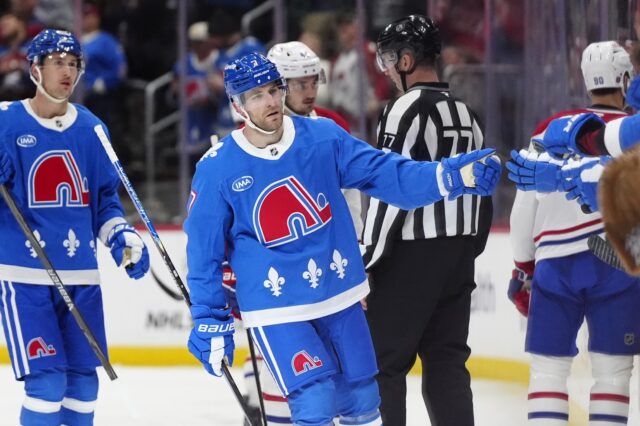The Colorado Avalanche beat the St. Louis Blues Wednesday evening at the Pepsi Center in a dramatic come-from-behind fashion. The game culminated in a Gabriel Landeskog overtime goal with a little less than 17 seconds remaining, bringing the Avalanche to within two points of the eighth playoff spot in the Western Conference.
Now, with three overtime matches under their belt, the Avs seem to finally be figuring out the smartest way to play the three-on-three format.
With this year being the NHL’s trial year for the new three-on-three overtime rule, it was known that there would be a learning curve; teams were going to take some time figuring out the best strategies to use. Just under half of the season is already behind us, and the manner in which teams are playing the new overtime system has already changed dramatically. Teams are slowing the game down, being more cautious with the puck and more conservative with their shot choices. Unfortunately for the Avalanche, while everyone else was learning how to play this “new game,” the vast majority of their games were ending in regulation.
Up until two weeks ago, the Avalanche had only played two overtime games. One, a frustrating, 1-0, early season loss at home to Carolina, during a time when the Avalanche were struggling to find the back of the net. The other, an emotionally driven 2-1 win against the Wild in early December.
The Colorado Avalanche simply never had the chance to find comfort in their three-on-three play with only two attempts in their first 35 games.
An overtime meeting with the Arizona Coyotes made the team realize their inadequacies in the three-on-three format. Head coach Patrick Roy was displeased by Colorado’s overtime play in his postgame, criticizing how long the players’ shifts were during that time.
“We played it like an all-star game,” Roy said. “We have to be aware going on the rush, the length of our shift was way too long and we had no energy coming back. It was not smart from our guys the way we played that overtime.”
The following practice, after the second game of a back-to-back in San Jose, the Avalanche got to work on their overtime game. They dedicated the final quarter of their practice to working on both the three-on-three and the shootout. The Avalanche realized how important it was going to be to improve this aspect of their game, so they practiced their zone entries, their patience with the puck and their shot selection.
In the long run, every point will matter, especially in an ultra-competitive Central division. Finding ways to achieve that extra point that comes with an overtime win was now a priority for the Avs.
Their next game, against the Chicago Blackhawks, just happened to be another game that reached overtime. The Avalanche played more disciplined and structured than they did in the Arizona loss, and it seemed as though we would see Colorado’s first shootout of the year. A brief mistake by captain Gabe Landeskog resulted in a too-many-men call and a loss for the Avalanche. A minor mistake, but a costly one, exposing the inexperience of the Avs in the three-on-three.
The overtime win Wednesday night against St. Louis was another back-and-fourth, hard-fought overtime, but involved a lot less mistakes from Colorado. They displayed a patience with the puck we had yet to see, a smart use of open space and safe, but tactical, puck movement in the offensive zone. It was a clear improvement from what the Avalanche had shown in their latest overtime contests.
“We know we haven’t played too many overtime games either, so its about making sure that we learn along the way, as much as we don’t want to play overtime,” Landeskog said following the Wednesday’s victory. “Against Chicago we got into penalty trouble because we started over extending our shifts and our line changes weren’t good enough. We wanted to make sure we were good at that tonight.”
Of course, it is a short sample size, but having three overtime finishes in the last two weeks has proven that the Avalanche are starting to get the hang of the new format. Many thought the three-on-three would benefit the faster teams, but through it’s short evolution we see there is more to it.
Through trial and error, the Avalanche are figuring out how to play the new overtime rules, and like many things surrounding this team, it is a process. The Avs are moving in the right direction in this facet of their game, and the experience they have gained recently will certainly be helpful in maximizing their point total.
The Avalanche finish out their season-long, five-game homestand Friday night at home against the Nashville Predators, the same team they are chasing in the standings. If the Avalanche win, however, they will be tied with the Predators in points. Due to the total games played, which is the first tie-breaking procedure, the Avalanche will still be one spot out of the playoffs. They will then meet the Blackhawks in Chicago on Sunday for the third of three consecutive Central Division matches for the Avalanche.



